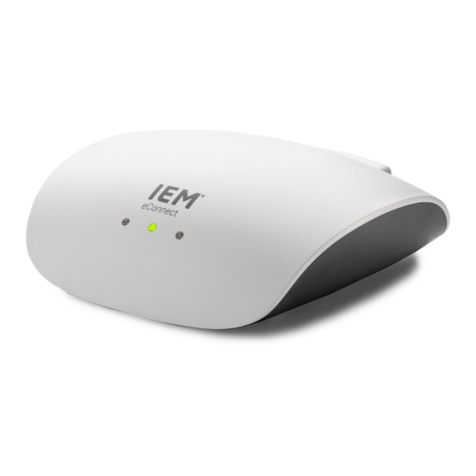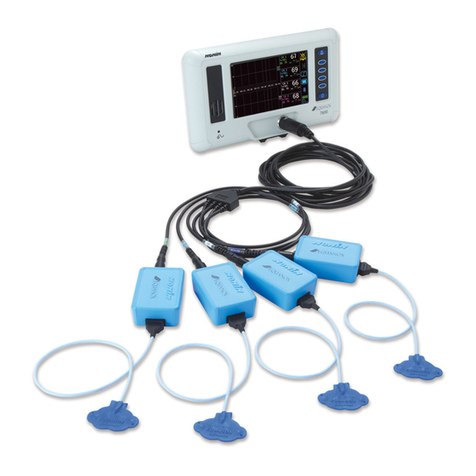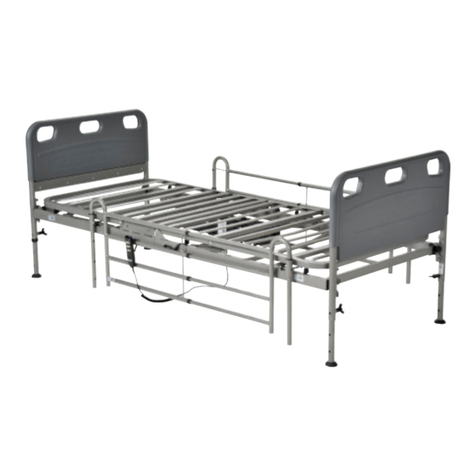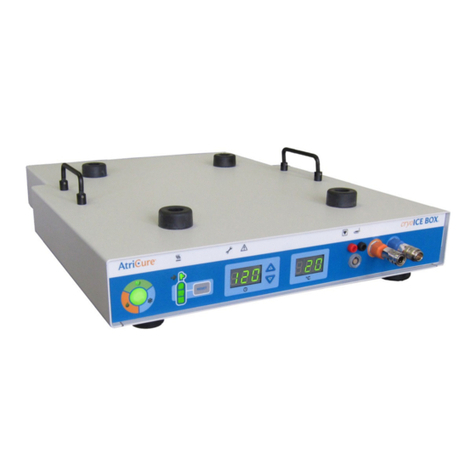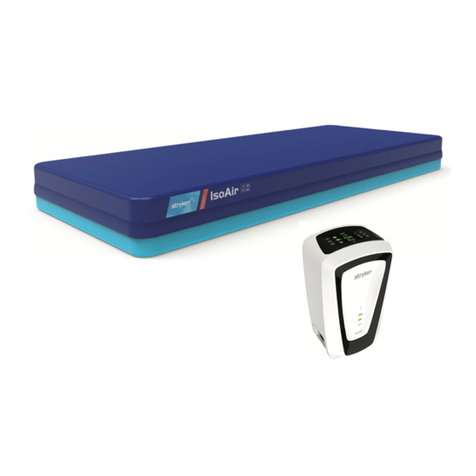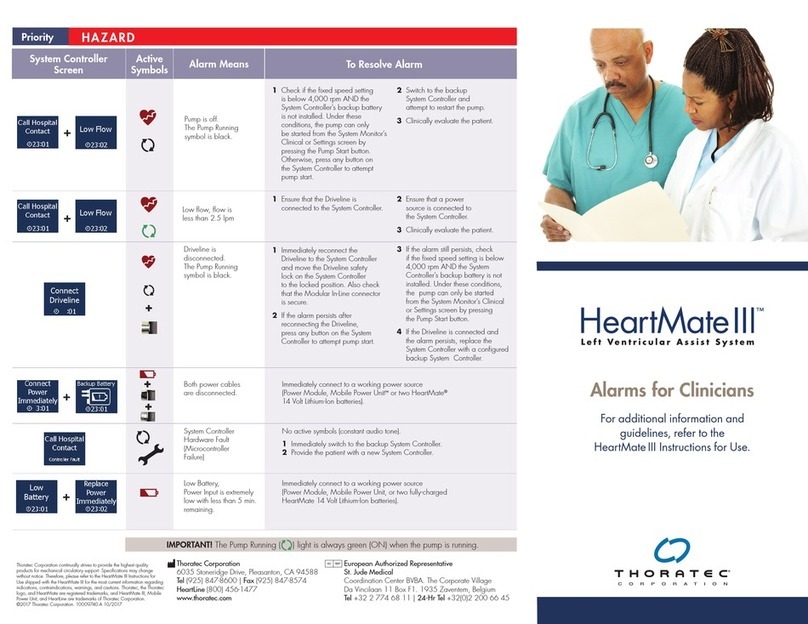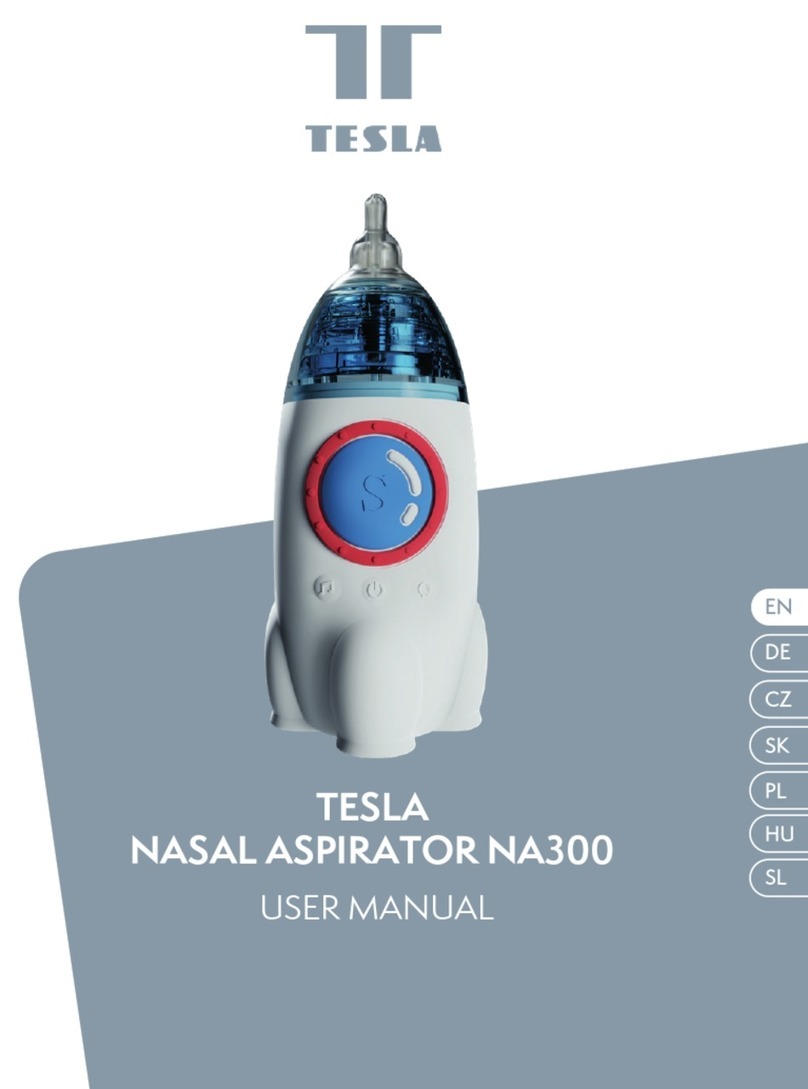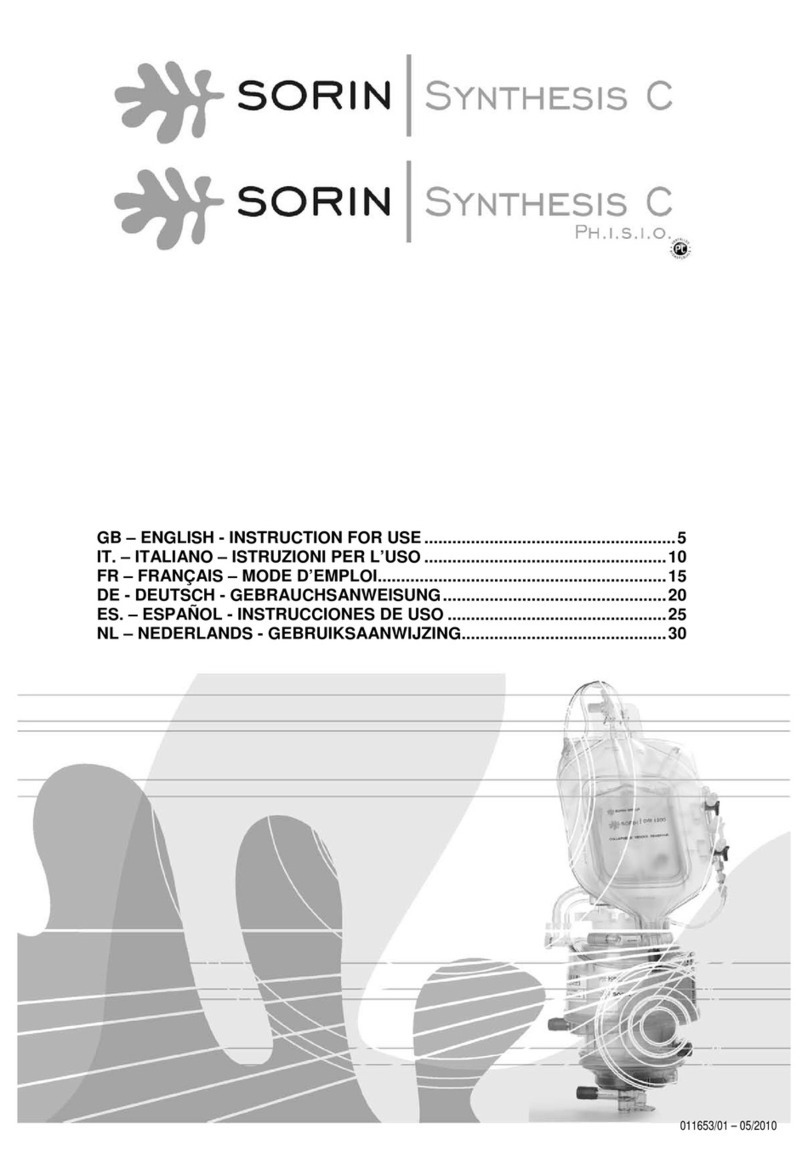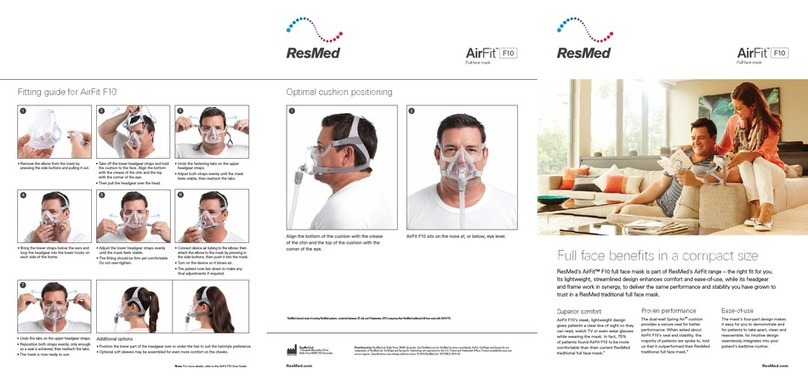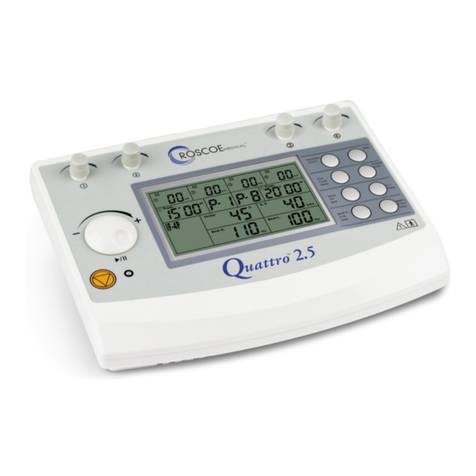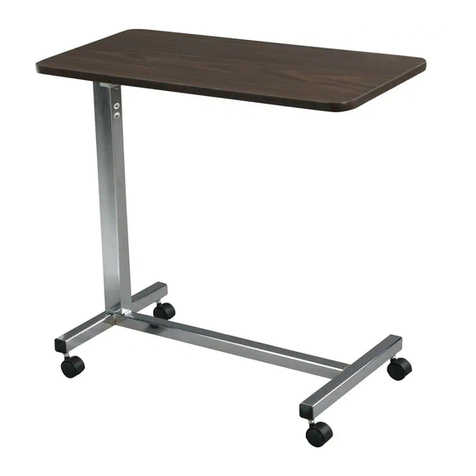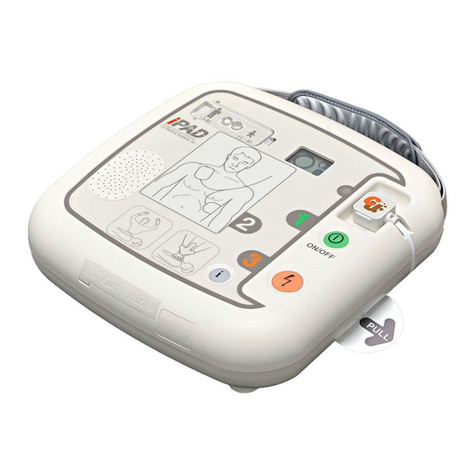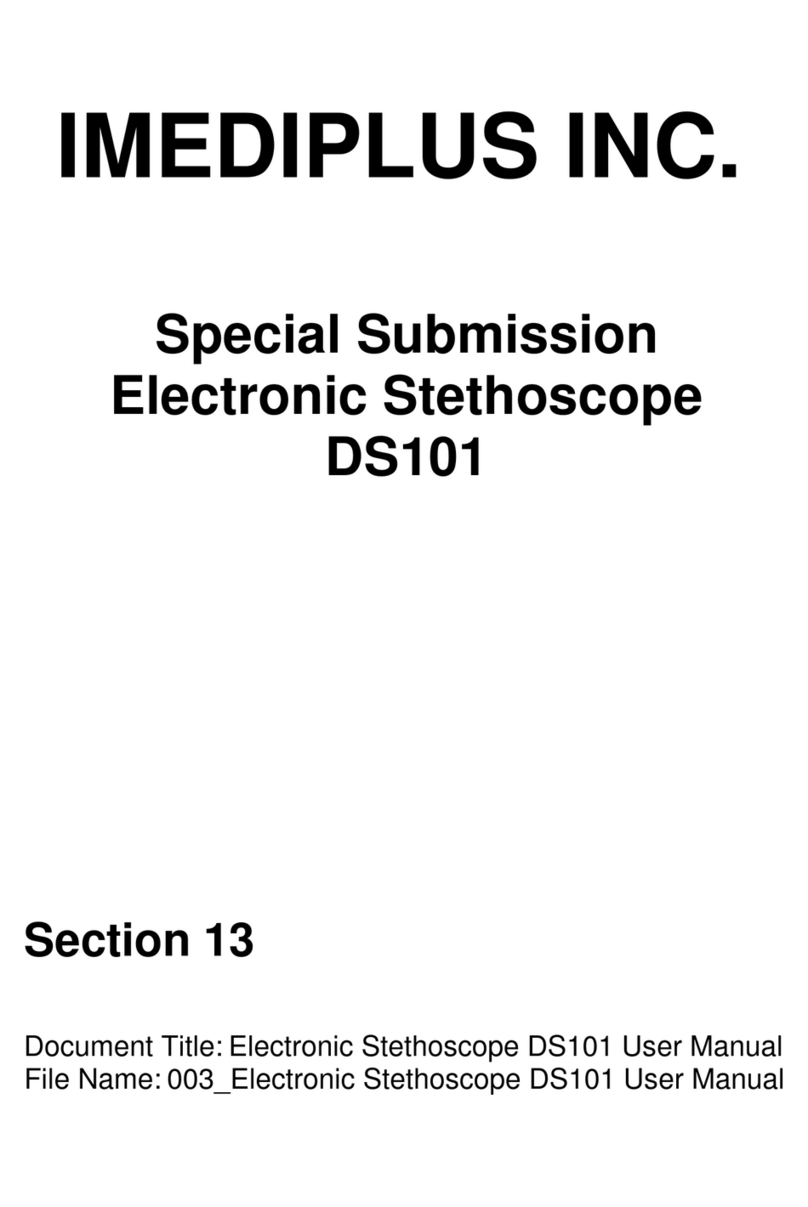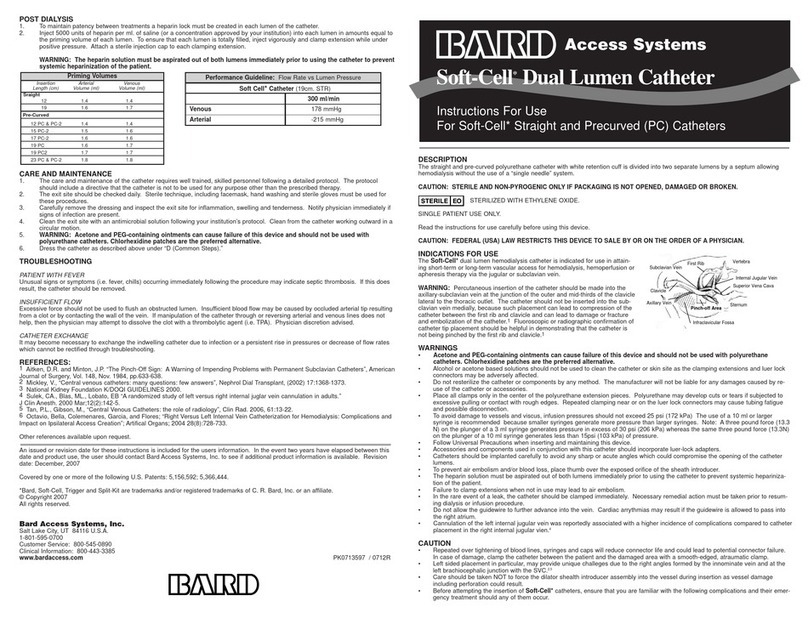IEM Mobil-O-Graph User manual

Instructions for Use
EN

2
Mobil-O-Graph®PWA
Long-term blood pressure monitor with pulse wave analysis (PWA)
For USA: Caution: Federal law restricts this device to sale by or on the order of a physician
Evaluation unit:
Hypertension Management Software CS (HMS CS)
IEM GmbH
Gewerbepark Brand
42
5
2078 Aachen
Germany
Email:
Internet:
www.iem.de
The content of these instructions for use may not be reproduced or published without the written approval of IEM
GmbH.
© IEM GmbH 2021. All rights reserved.

3
EN
Table of contents
1Introduction ....................................................... 5
1.1 Preliminary note.....................................................5
1.2 About these instructions for use ........................6
1.3 Clinical trials ...........................................................7
1.4 CE Mark ...................................................................7
2Instruction notes ............................................... 8
2.1 Intended use...........................................................8
2.2 Improper use ..........................................................8
2.3 Essential performance features .........................9
2.4 Indication ............................................................. 10
2.5 Side effects of long-term blood pressure
measurement...................................................... 10
2.6 Safety .................................................................... 11
Defining the signal words used........................ 11
Defining general notes....................................... 12
2.7 Important safety instructions for the doctor. 12
3Product description......................................... 20
3.1 Description........................................................... 20
3.2 Unpacking ............................................................ 21
3.3 Description of device ......................................... 21
Blood pressure monitor..................................... 21
Buttons ................................................................. 22
The display........................................................... 24
Audible signals.................................................... 24
Cuff connection .................................................. 25
Data socket.......................................................... 25
Infrared interface ................................................ 25
3.4 Preparation for measurement ..........................26
Switching on ........................................................26
Clearing the memory..........................................27
Setting the time/date .........................................28
Transferring patient data (ID) ...........................28
Specifying the desired measurement log.......29
Putting on the blood pressure monitor and
starting the measurement.................................30
3.5 Position and conduct of the patient ................33
3.6 Technical data and environmental conditions
................................................................................35
3.7 Symbols ................................................................37
4Care and maintenance ....................................39
4.1 Disinfection and cleaning ..................................39
4.2 Maintenance plan ...............................................42
5Troubleshooting...............................................43
5.1 Main sources of error.........................................43
5.2 Transmission error .............................................44
5.3 Checklist ...............................................................44
5.4 Mobil-O-Graph®error description ....................45
Communication error Mobil-O-Graph®
Bluetooth®interface ...........................................50
6Rechargeable batteries/batteries...................52
6.1 Operation with rechargeable batteries............52
6.2 Operating with ALKALINE batteries.................54
7Warranty and repair conditions ......................55

Introduction
5
EN
1Introduction
1.1 Preliminary note
Thank you for choosing the long-term blood pressure monitor Mobil-O-Graph®with the 24-hour pulse wave analysis
(PWA) option. The blood pressure measuring device has been specially developed for 24-hour measurement and
works according to the oscillometric measuring principle. The 24-hour pulse wave analysis can be activated at any
time in a variety of configurations using a licence key and the Hypertension Management Software Client Server
(HMS CS).
In practice, you can prepare the Mobil-O-Graph®, also referred to below as the blood pressure monitor, for a new
patient in a few minutes. This gives you the advantage of being able to use the blood pressure monitor optimally
and to conduct a 24-hour profile for each day. The Mobil-O-Graph®will thus be quickly integrated into your everyday
practice. The Hypertension Management Software Client Server (HMS CS) helps you to manage your blood
pressure data and allows you to analyse and evaluate the blood pressure measurements.

Introduction
6
1.2 About these instructions for use
These instructions for use will ensure that you become familiar with the long-term blood pressure measuring device
and the accessories. With a little practice you will find out how easy the blood pressure monitor is to use.
The readings are evaluated using Hypertension Management Software Client Server data management, which is
included on the CD together with the software handbook.
Please refer to the HMS CS instructions for use for software operating instructions.
These instructions for use explain the blood pressure monitor and accessories in the order in which you will operate
the device and also use later.
The individual functions are not explained until they are needed. You will therefore be familiarized with the blood
pressure monitor on a step-by-step basis.
The instructions for use should be kept for future use and must always be available to the user!

Introduction
7
EN
1.3 Clinical trials
The Mobil-O-Graph®fulfils the requirements of the ESH (European Society of Hypertension), BHS (British
Hypertension Society) and ISO 81060-2:2013.
1.4 CE Mark
The Mobil-O-Graph®fulfils the requirements of the
93/42/EEC (MDD),
2014/53/EU (RED),
2011/65/EU (RoHS) Directives
and bears the CE Mark.
IEM GmbH hereby declares that the Mobil-O-Graph®corresponds to the 2014/53/EU Directive.
The complete text of the EU declaration of conformity is available at the following website address:
https://www.iem.de/doc/.

Instruction notes
8
2Instruction notes
2.1 Intended use
The intended use is 24-hour blood pressure measurement and pulse wave analysis (PWA).
The Mobil-O-Graph®is only to be used under medical supervision by medical personnel.
2.2 Improper use
The Mobil-O-Graph®must not be used for any purpose other than the process of measuring blood pressure
described herein.
Due to the risk of strangulation by the tube and cuff, the Mobil-O-Graph®must not be used on patients of
unsound mind and must not be left within reach of unsupervised children.
The Mobil-O-Graph®is not intended for use on babies and children under the age of 3.
The Mobil-O-Graph®is not intended for use on women who are pregnant or those with pre-eclampsia.
The Mobil-O-Graph®must not be used for alarm-triggering blood pressure monitoring during operations or
in intensive care units.
The Mobil-O-Graph®must not be used on airplanes!

Instruction notes
9
EN
2.3 Essential performance features
The essential performance features are defined as blood pressure measurement with:
Error tolerances of the pressure gauge and measurement results within the required limits according to
IEC 80601-2-30
Maximum change value in blood pressure determination according to IEC 80601-2-30
Power delivery (pressure supply to the cuff) within the set limits according to IEC 80601-2-30
An error is issued if successful blood pressure measurement is not possible.
The device does not trigger any alarms in the sense of IEC 60601-1-8 and is not intended for use together with HF
surgical devices or for clinically monitoring patients, e.g. in an intensive care unit.
In the event that the status or configuration of the device is unclear, the device will go into a safe operating mode,
which causes the device to release the air from the cuff.
The cuff is not automatically pressurised; to do so, the device must be initiated manually.

Instruction notes
10
2.4 Indication
The Mobil-O-Graph®is intended to clarify the blood pressure situation and for diagnosis support. The field of
application is domestic healthcare and professional facilities such as doctor’s practices and medical centres.
The doctor may, at his own discretion, carry out an appropriate examination on his patients with this medical
system if, among other things, they:
are hypotensive or
are hypertensive,
require antihypertensive therapy,
suffer from myocardial hypertrophy or
suffer from nephrological dysfunction.
2.5 Side effects of long-term blood pressure measurement
Long-term blood pressure measurement is a commonly practised and valued measurement technique, and has
found its way into daily diagnostics and treatment monitoring.
Blood pressure measurement can lead to petechial bleeding or haematomas on the measuring arm despite the
correct positioning of the cuff in case of coagulation disorders, taking anticoagulants or in the case of sensitive
body tissue. Always check whether the patient has coagulation disorders or is undergoing anticoagulant treatment.
The patient-dependent risk resulting from anticoagulant treatment or in patients with coagulation disorders arises
irrespective of the type of measuring device.

Instruction notes
11
EN
2.6 Safety
Read the safety instructions carefully before using the products! It is important that you understand the information
in these instructions for use. If you have any questions, please do not hesitate to contact technical support.
Defining the signal words used
In order to point out dangers and important information, the following symbols and signal words are used in these
instructions for use:
WARNING
Short description of the danger
This warning symbol in connection with the signal word
WARNING
indicates a possible or immediately
threatening danger.
Non-adherence may lead to mild, moderate to severe injuries or to death.
ATTENTION
Short description of the danger
This warning symbol, in connection with the signal word
ATTENTION
, indicates possible material damage.
Non-adherence may lead to damage to the products or their accessories.

Instruction notes
12
Defining general notes
Note
The signal word
Note
indicates further information about the Mobil-O-Graph®or its accessories.
External reference
Indicates reference to
external documents in which further information may optionally be found.
2.7 Important safety instructions for the doctor
WARNING
Danger of blood flow interruptions as a result of constant cuff pressure or as a result of too frequent
measuring
If the patient has limited cognitive abilities, the device may only be used under supervision.
Ensure the shoulder strap and cuff tube are in the correct position and take care that the cuff tube is not
knotted, squashed or stretched.
Do not kink the cuff tube.
Always put the cuff tube under clothing (even at night).
Be sure to tell patients about the correct positioning of the cuff and point out to them that the device is
to be placed in such a way that the inflated cuff is not squeezed or kinked, especially when sleeping.
Measurement can be interrupted at any stage by pressing any button. This deflates the cuff and the
device can be removed.
Inform the patient about this danger.

Instruction notes
13
EN
WARNING
Risk of strangulation by shoulder strap and cuff tube
If the patient has limited cognitive abilities, the device may only be used under supervision.
The Mobil-O-Graph®must not be used on patients of unsound mind.
If the Mobil-O-Graph®is used on children, this should be done with particular caution and under the
constant supervision of the doctor in accordance with regulations.
Do not place the shoulder strap and cuff tube around the patient’s neck.
Instruct the patient to wear the cuff only on the upper arm and, in any case, to make sure that neither
the shoulder strap nor the pressure tube could ever wrap around the neck. For this purpose, the air tube
is always laid under the outer clothing (even at night).
Be sure to tell patients about the correct positioning of the cuff.
Instruct the patient to turn off the device, remove the cuff and inform you if they are experiencing any
pain, swelling, redness or numbness in the arm around which the cuff is placed. (It is expected that the
patient may experience some mild to moderate discomfort during a blood pressure measurement.)
Measurement can be interrupted at any stage by pressing any button. This deflates the cuff and the
device can be removed.

Instruction notes
14
WARNING
Risk of injury if used on patient groups for whom this device is not intended
The Mobil-O-Graph®is not intended for use on women who are pregnant or those with pre-eclampsia.
WARNING
Risk of injury from putting on and pumping up a cuff over a wound
Do not place the Mobil-O-Graph®over a wound or bandage.
WARNING
Danger of a temporary loss of function of a present electrical medical device as a result of putting on or
pumping up a cuff when the patient is wearing a further electrical medical device for monitoring on the same
limb.
Only put the Mobil-O-Graph®on if the patient is not wearing any other electrical medical device on their
arm.

Instruction notes
15
EN
WARNING
Danger of injury and danger of blood flow disruptions as a result of putting on and pumping up a cuff on limbs
with an intravascular drip or intravascular treatment or with an arteriovenous (AV) shunt.
Do not put the Mobil-O-Graph®on anyone who has an intravascular drip or arteriovenous (AV) shunt in
their arm.
WARNING
Danger of injury as a result of allergic reactions to the cuff material
The printing ink contains epoxy resin. In hypersensitive patients, the ink can cause allergic reactions in
very rare cases.
Let your patients know that they should turn the device off and take off the cuff in the event of any pain
or allergic reactions.
Follow hygiene procedures according to the maintenance plan.
WARNING
Danger of injury as a result of using unapproved accessories
Only use accessories approved and distributed by the manufacturer.
Read the respective information provided by the manufacturer before using the accessories for the first
time.
Check accessories in relation to the manufacturer’s specifications before use.
Instruct the person to be measured to switch off the device immediately, remove the cuff and to inform
you if they experience any pain.

Instruction notes
16
WARNING
Risk of petechiae, haemorrhages or subcutaneous haematoma
Make sure that the use of the device does not result in impaired blood circulation in the arm due to the
patient’s state of health.
Tissue bleeding or haematoma can occur in patients with sensitive body tissue despite proper
positioning.
Find out if the patient is taking anticoagulants or suffers from coagulation disorders.
WARNING
Danger of injury as a result of putting on or pumping up a cuff on an arm on the same side of the body on which
a mastectomy has been carried out
Do not put the Mobil-O-Graph®on a person’s arm that is on the side where a mastectomy has been carried out.

Instruction notes
17
EN
ATTENTION
Damage to the device
Liquid must not get into the device. If you think that liquid has entered the device during cleaning or use
of the device, the device must not be used any more.
If the device is exposed to moisture, switch the device off and remove the batteries. Be sure to inform
technical support or send the device to your specialist supplier or manufacturer.
The device must not be used in the vicinity of a magnetic resonance imaging apparatus or in the direct
proximity of another electrical medical device.
The Mobil-O-Graph®is not suitable for simultaneous use with high-frequency surgical devices.
Do not drop the device and do not place objects on top of it.
Do not use the device directly adjacent to other devices or stacked with other devices, as this may result
in malfunction. If it nevertheless becomes necessary to use the device in the manner described above,
this device and the other devices should be monitored to ensure that they are functioning correctly.
The use of components other than those supplied with the product may lead to measurement errors, as
alternative transformers and cables, for example, may increase electromagnetic interference emissions
or reduce electromagnetic immunity. You should therefore only use IEM accessories.
The device must not be connected to a PC or other device when it is still electrically connected to a
patient.
Measurement can be interrupted at any stage by pressing any button. This deflates the cuff and the
device can be removed.
Remove the batteries or power pack from the battery compartment as soon as they have run out of
charge or if you do not expect to use the measuring device for a long period of time.
The cuff and tube are made of a material that does not conduct electricity. They therefore protect the
device against the effects of discharging a defibrillator. In the event of discharging a defibrillator, the

Instruction notes
18
device itself must not touch the patient since the device can be damaged as a result of this discharging
which may result in incorrect values being displayed.
Extreme temperatures, humidity or air pressure can influence measurement accuracy. Please follow the
instructions for use.
The Mobil-O-Graph®fulfils all requirements of the EMC standards, but the Mobil-O-Graph®should not be
exposed to strong electromagnetic fields as this may cause malfunction outside the limits. You should
therefore ensure that the Mobil-O-Graph®is at least 30 cm (12 inches) from any portable RF
communication devices.
Do not open the casing of the Mobil-O-Graph®, otherwise any warranty will no longer be valid.
Do not attempt to recharge the batteries. Do not attempt to open or short-circuit the
batteries/rechargeable batteries. There is a risk of explosion.

Instruction notes
19
EN
Note
Pulse wave analysis provides additional indicators of potential risks, but is not valid as a sufficient
indicator of individual illnesses or recommendations for treatment.
It should be noted that the use of pulse wave analysis in children currently has no clinical trials against
reference methods.
External interference factors, such as movement of the arm being measured, physical activity, driving or
using public transport during measurements, may result in movement artefacts or incorrect
measurements. When evaluating measurement results, you should therefore consult the record kept by
the patient and take this into account in your evaluation.
Note
Electrostatic discharges, such as discharges of synthetic textile clothing, can trigger a reboot of the device.
The same behaviour occurs when the internal memory batteries are empty and the external batteries are
replaced. Here, the device starts in the last used operating state.
The appendix contains important information for the patient. This patient information can also be
found in DIN A4 format at https://www.iem.de/en/patient-information/.
If necessary, you can print it out and give it to the patient.

Product description
20
3Product description
3.1 Description
The ambulatory blood pressure monitoring consists of two main components:
the Mobil-O-Graph®monitor with various cuffs and additional accessories.
the Hypertension Management Software Client Server (HMS CS) evaluation software for the evaluation of
the measurement results by the doctor.
The blood pressure measurements can be read with the help of the HMS CS evaluation unit. Using the software,
stored measurement results are automatically transferred to a PC, displayed on the screen as graphics, lists and
statistics, and printed out.
The Mobil-O-Graph®can be prepared for the next patient immediately afterwards. This procedure can be completed
in just a few minutes with little practice. This allows the doctor to use the device every working day around the
clock.
The Mobil-O-Graph®with the HMS CS is designed to allow documentation and visualisation of a blood pressure
profile throughout the day and night. Additional parameters such as night-time values and blood pressure
fluctuations are detected. This allows the doctor to prescribe individual and optimal medical treatment and monitor
its outcome.
Please refer to the HMS CS instructions for use for software operating instructions.
Table of contents
Other IEM Medical Equipment manuals

